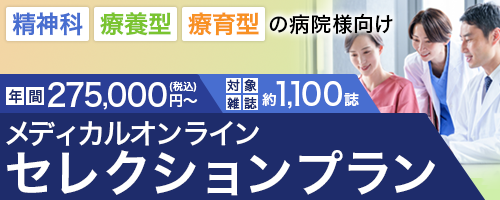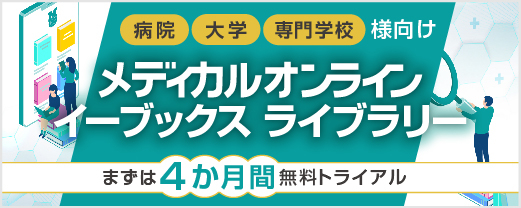アブストラクト
| Title | 喀痰障害に対する気道クリアランス法 |
|---|---|
| Subtitle | 特集 / リハビリテーション診療の現場で悩む呼吸トラブル対策 II. 喀痰障害 |
| Authors | 宮川哲夫*1, 一場友実*2 |
| Authors (kana) | みやがわてつお, いちばともみ |
| Organization | *1昭和大学大学院保健医療学研究科呼吸ケア領域, 教授, *2杏林大学保健学部理学療法学科, 准教授 |
| Journal | MB Medical Rehabilitation |
| Volume | |
| Number | 257 |
| Page | 23-30 |
| Year/Month | 2021 / 1 |
| Article | 報告 |
| Publisher | 全日本病院出版会 |
| Abstract | 「Abstract」 喀痰障害に対する気道クリアランス法には, 現在, たくさんの方法が行われている. 痰の移動は, 咳嗽, 線毛運動, 気流(換気), 重力, 喀痰レオロジー, 肺メカニクス, 気道分泌物の存在する気管支の部位などによって影響を受ける. 排痰のメカニズムで最も大切なのは, まずcritical opening pressureを作り末梢肺をリクルートメントさせ, 次に速い呼気流量で痰を中枢気道へ移動させ, そして咳あるいは機械的咳介助を用いて喀出させることである. 痰粘弾性が高く, 気道抵抗が高い排痰困難な場合は, 胸郭外と肺内の方法を併用する. 気道クリアランス法の選択には, 疾患や病態, 無気肺の有無, 深呼吸の有無, 痰の粘弾性, 末梢か中枢気道, 随意咳の有無, 呼吸筋弱化の有無, 年齢, 耐性を考慮して選択する. |
| Practice | 医療技術 |
| Keywords | 気道クリアランス法 (airway clearance techniques), 気道クリアランスの生理学 (airway clearance physiology), 気道解放閾値圧 (critical opening pressure), 機械的咳介助 (mechanical insufflation-exsufflation; MIE), 高頻度胸壁振動法 (high frequency chest wall oscillation; HFCWO) |
- 全文ダウンロード: 従量制、基本料金制の方共に968円(税込) です。
参考文献
- 1) 宮川哲夫 : 気道クリアランスの選択基準. 日呼吸ケアリハ学誌, 24(3) : 298-305, 2014.
- 2) 宮川哲夫 : 気道クリアランス法. 宮川哲夫(編), 呼吸ケアナビガイド, pp.60-79, 中山書店, 2013.
- 3) Sedaghat MH, et al : Effect of Cilia Beat Fre-quency on Mucociliary Clearance. J Biomed Phys Eng, 6(4) : 265-278, 2016.
- 4) Duncan FR : Mucoactive agents for airway mucus hypersecretory diseases. Reapir Care, 52 : 1176-1197, 2007.
- 5) Rajendran RR, Banerjee A : Mucus transport and distribution by steady expiration in an ideal-ized airway geometry. Med Eng Phys, 66 : 26-39, 2019.
残りの26件を表示する
- 6) Buttona B, et al : Roles of mucus adhesion and cohesion in cough clearance. PNAS, 115(49) : 12501-12506, 2018.
- 7) McIlwaine M, et al : Personalising airway clear-ance in chronic lung disease. Eur Respir Rev, 26(143) : 160086, 2017.
- 8) Mauroy B, et al : Toward the modeling of mucus draining from human lung : role of airways deformation on air-mucus interaction. Front Physiol, 6 : 1-15, 2015.
- 9) Volpe MS, et al : Airway clearance techniques for mechanically ventilated patients : Insights for optimization. Respir Care, 65(8) : 1174-1188, 2020.
- 10) 宮川哲夫, 一場友実 : 腹臥位療法. Clin Eng, 30(8) : 757-763, 2019.
- 11) Coppo A, et al : Feasibility and physiological effects of prone positioning in non-intubated patients with acute respiratory failure due to COVID-19(PRON-COVID) : a prospective cohort study. Lan-cet Respir Med, 2020. Published Online June 19, 2020. [https://doi.org/10.1016/]
- 12) Borges LF, et al : Expiratory rib cage compres-sion in mechanically ventilated adults : system-atic review with meta-analysis. Rev Bras Ter Intensiva, 29(1) : 96-104, 2017.
- 13) Ouchi A, et al : Effects of manual rib cage com-pressions on mucus clearance in mechanically ven-tilated pigs. Respir Care, 65(8) : 1135-1140, 2020.
- 14) 宮川哲夫 : ALI/ARDSに対する呼吸理学療法. 人工呼吸, 28(1) : 13-20, 2011.
- 15) Oliveira ACO, et al : Effects of manual chest compression on expiratory flow bias during the positive end-expiratory pressure-zero endexpi-ratory pressure maneuver in patients on mech-anical ventilation. J Bras Pneumol, 45(1) : e20180058, 2019.
- 16) Chen Z, et al : Effects of the lower airway secre-tions on airway opening pressures and suction pressures in critically Ill COVID-19 patients : A computational simulation. Ann Biomed Enginee-ring, 2020. [https://doi.org/10.1007/s10439-020-02648-0]
- 17) lez-Bellido VG, et al : Immediate effects and safety of high-frequency chest wall compression compared to airway clearance techniques in non-hospitalized infants with acute viral bron-chiolitis. Respir Care, in press 2020. doi : 10.4187/respcare.08177
- 18) McIlwaineM, et al : Positive expiratory pressure physiotherapy for airway clearance in people with cystic fibrosis. Cochrane Database Syst Rev, 2009(11) : CD003147, 2019.
- 19) Nicolini A, et al : Comparison of effectiveness of te-mporary positive expiratory pressure versus oscill-atory positive expiratory pressure in severe COPD patients. Clini Respir J, 12(3) : 1274-1282, 2018.
- 20) Morrison L, Milroy S : Oscillating devices for airway clearance in people with cystic fibrosis. Cochrane Database Syst Rev, 4(4) : CD006842, 2020.
- 21) Poncin W, et al : Comparison of 6 oscillatory posi-tive expiratory pressure devices during active expiratory flow. Respir Care, 65(4) : 492-499, 2020.
- 22) Morgan SE, Mosakowski S, Giles BL et al : Vibra-tory in expiratory flow requirements among oscillatory positive pressure. Can J Resoir Ther, 56 : 7-10, 2020.
- 23) Miyagawa T, Ichiba T : Effects of oscillatory positive expiratory pressure on mucus draining, rheological property and lung mechanics : Com-parison of Acapella(R) versus Vibralung(R). The 26th Euro Respi Society International Congress, PA3750, London, 2016.
- 24) Lee AL, et al : Positive expiratory pressure therapy versus other airway clearance tech-niques for bronchiectasis. Cochrane Database of Systematic Reviews, 9(9) : CD011699, 2017. doi : 10.1002/14651858.CD011699.pub2
- 25) 宮川哲夫, 一場友実 : 在宅神経難病患者の呼吸ケアとリハビリテーション治療. MB Med Reha, 243 : 49-58, 2019.
- 26) Miyagawa T, Ichiba T : Comparison of cough assist in mechanical ventilator on the differ-ences of rheological property and lung mechan-ics. Respir Care, 2020.
- 27) Sancho J, et al : Usefulness of Oscillations Added to Mechanical In-Exsufflation in Amyotrophic Lateral Sclerosis. Respir Care, 65(5) : 596-602, 2020.
- 28) Bach JR, et al : Efficacy of mechanical insuffla-tion-exsufflation in extubating unweanable sub-jects with restrictive pulmonary disorders. Respir Care, 60(4) : 477-483, 2015.
- 29) Miyagawa T, Ichiba T : Efficacy of cough with mechanical in-exsufflation(MI-E)and high fre-quency chest wall oscillation(HFCWO)for air-way clearance. 2015 ERS Congress, Best abstracts in COPD management, PA727, 2015.
- 30) Lauwers E, et al : Outcome measures for airway clearance techniques in children with chronic obstructive lung diseases : a systematic review. Respir Research, 21 : 217, 2020. [https://doi.org/10.1186/s12931-020-01484-z]
- 31) Daynes E, et al : The Use of Airway Clearance Devices in the Management of Chronic Obstruc-tive Pulmonary Disease : A Systematic Review and Meta-Analysis of Randomized Controlled Trials. Ann Am Thorac Soc, 2020 Aug 12. doi : 10.1513/AnnalsATS.202005-482OC



